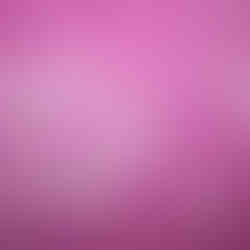Tie Dyeing, it’s been around longer than you think!
- Kimberlie Clare-Campbell
- Jun 7, 2017
- 4 min read

In the lead up to 2020 there is a craving to DIY, to knit our own socks, crochet your own beanie, dye our own clothes. Tie Dyeing has become our favourite way to upcycle our old clothes and express our creativity on new ones. Although many of us associate Tie Dyeing with the Hippies of the 60’s the origins of “Tie Dyeing” are actually ancient and may even be older than the origins of pottery and agriculture.
Archaeologists have found examples of “Tie Dyes” in Palaeolithic and Neolithic digs in Europe. During their excavations archaeologists have discovered woven fabrics that appear to have been bound with threads and then dyed with red ochre, flowers, bark or plants to make decorative colours and patterns. These natural dyes stained the fabric more than dyed it as our ancestors were yet to discover the mordants that were needed to permanently bond the colour to the fibre. With the discovery of mordants greater varieties and more permanent colours were used for dyeing. The earliest known use of mordants such as alum, copper, iron and tin with fibres dates from 2350 BC in the Indus Valley, however it is suspected that the Ancient Egyptians were using mordants before that time.
Archaeologists have discovered woven fabrics that appear to have been bound with threads and then dyed with red ochre dated to the Palaeolithic era.
As people migrated and traded goods Tie dyeing techniques spread throughout Africa. Traditional designs were first tied or stitched into fabric, using cotton or raffia threads or the artists drew on the cloth using a paste made from cassava, a tuber. They then dipped the fabrics into liquids made from vegetable dyes, which colour all but the tied (resist) areas. Traditionally indigo plants was used for deep blue dyes, while reddish brown dyes were extracted from cola nuts, the camwood tree, and the redwood tree. Greens, yellows, and blacks were prepared from other plants or minerals.
Through trade routes like the famous Silk road the art of fabric tying and dyeing spread from African, through India, Europe and into Asia. Bandhani is the Indian technique of tie and dyeing still practised by Indian’s mainly of Rajasthan and Gujarat to producing odhnis (veils), saris and turbans. The main colours used in Bandhani are yellow, red, green and black - red, a symbol of marriage, saffron, a colour worn by yogi who has renounced the world, yellow, which stands for spring and black and maroon, used for mourning. Bandhani designs include a variety of symbols including, dots, squares, waves and strips. Each caste and tribe has it’s own special traditional designs.
According to historical records, dyeing and weaving techniques first appeared in the area of Dali in what is now modern China during the Eastern Han Dynasty. The Nan Zhao dancing group came to Chang’an to perform. Records maintain their costumes were tie-dyed with pictures of animals and plants and lines of eight colours. During subsequent Dynasties the Bai people have continually excelled at Tie Dyeing, most Bai Tie-dying is blue and white. The Bai people use techniques including drawing and brushing patterns, knotting, soaking, cloth-dyeing, heating, drying, string-removing. Their tools include dye vats and jars, dye sticks and hangers. The Bai people are still famous for their tie dyeing today.
It is thought that the Japanese Art of Shibori originated from the Chinese style and entered Japan about 1300 years ago. Originally Shibori was a technique used by the poor in Japan to recycle their clothing. Being poor they couldn’t afford to buy expensive fabrics like silk and cotton, they wore mostly clothing made from cheap hemp fibres. When the colours faded they would use the Shibori techniques with vats of indigo dye to renew their clothing. Between 1603–1867 Japan was in a very stable and peaceful time and many arts flourish. It was during this time that Shibori flourished and became two distinct arts. One for the nobility was practiced on silk for Kimono. The other as a folk art differing from region to region. Both styles of Shibori as still practiced today.
The art of Tie Dyeing even traveled as far as Peru. The Pre-Incan Peruvian’s used the technique of tying and dyeing warp yarns which were then used for weaving the traditional Ikat patterns. The weft yarns were dyed in uniform colours. Today the Araucanian Indian’s of Chile still use this method to create their famous ponchos and blankets.
Tie Dye’s revival
During the 1960’s there was a lot of opposition to the Vietnam war. Teenagers and young adults were looking for an alternative to the lives their parents were living. Many chose to drop out and tune in; and in the process rediscovered the traditional arts and crafts of Asia. They enjoyed the simplicity and traditional values and saw making their own clothing as a way of expressing themselves.
It was at this time that Fibre reactive dyes became more readily available. These dyes come in bright vibrant colours and readily bond with fabric to produce permanent colours and are easy to use. The hippy movement used these and other dyes to dye their bright Tie Dyes. When popular rock musicians such as Jimi Hendrix and John Sebastian wore tie-dye on stage Tie Dye clothing became very popularity. Tie Dyeing lost some of it’s popularity during the 70’s and 80’s yet made a comeback in the 90’s.
Today we see a real need to upcycle our clothing to help make it more sustainable. With technology entering into everything we do it’s refreshing to make our own “things” again. Traditional crafts including knitting, crochet and Tie Dyeing are making a comeback in a big way because we long to do things with our hands, to express our own creativity, to have it in our homes and to give as gifts. At Bright Crafts we have kits that make Tie Dyeing fun and simple and encourage you to express your individuality.













Comments